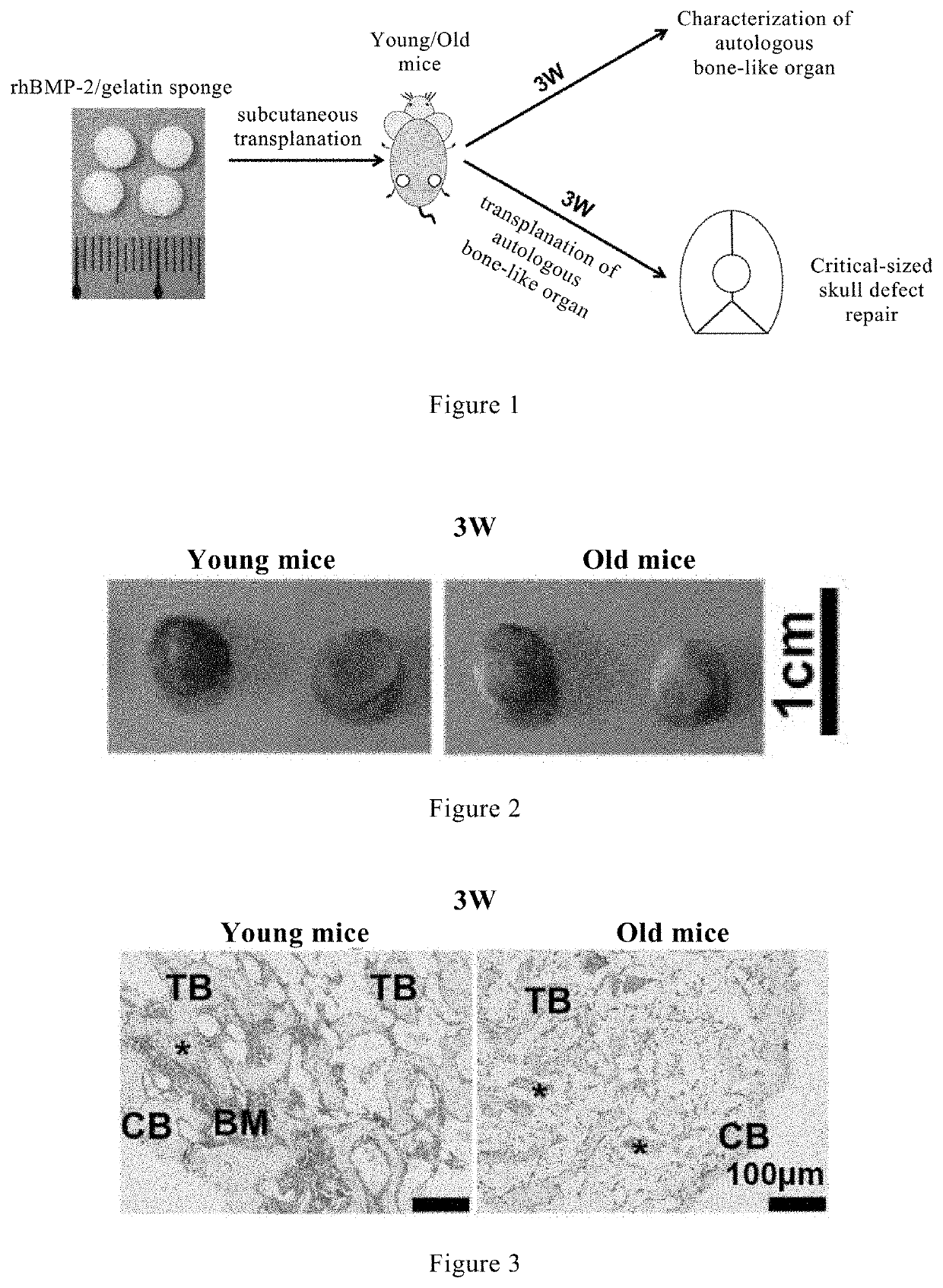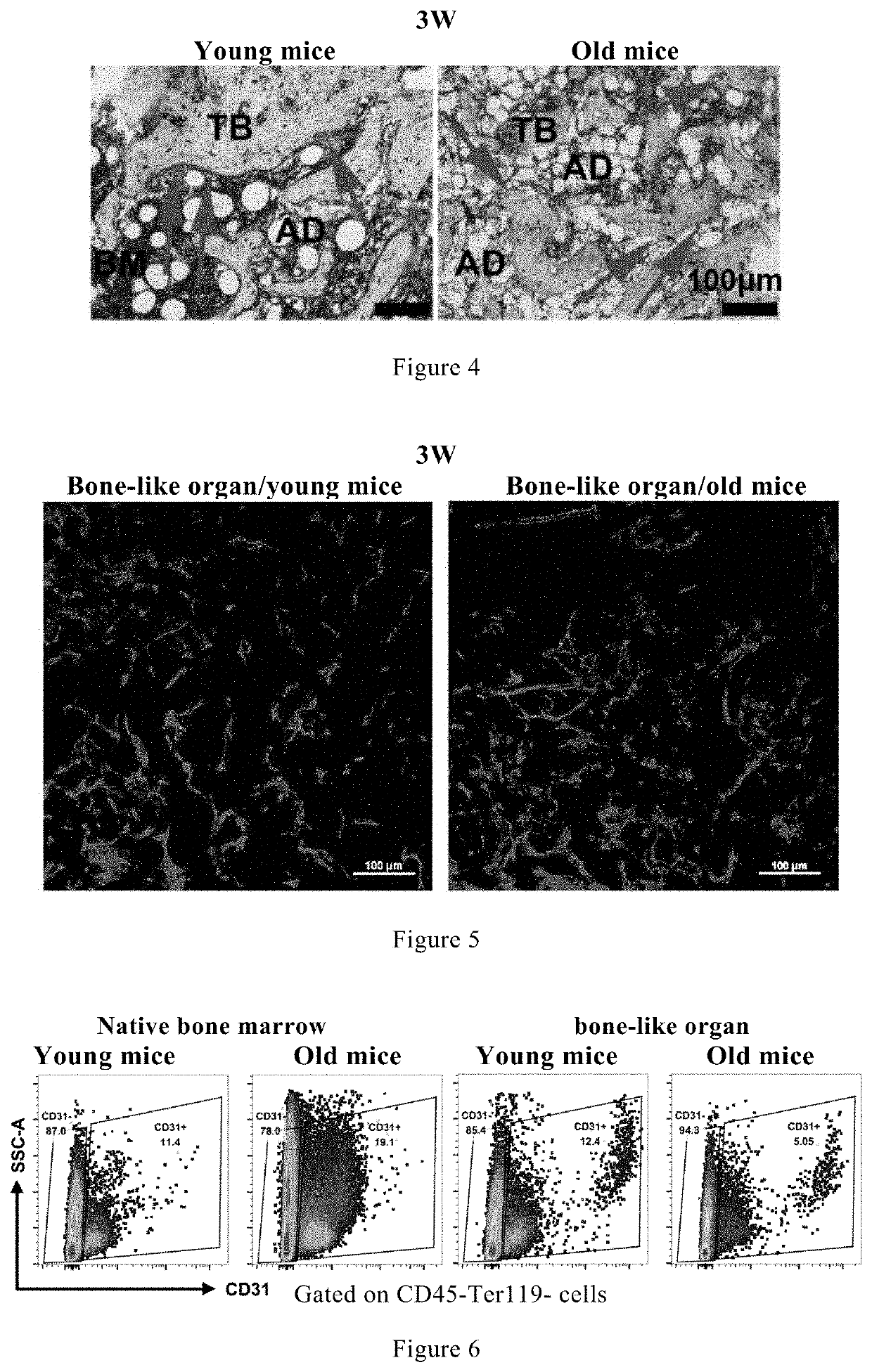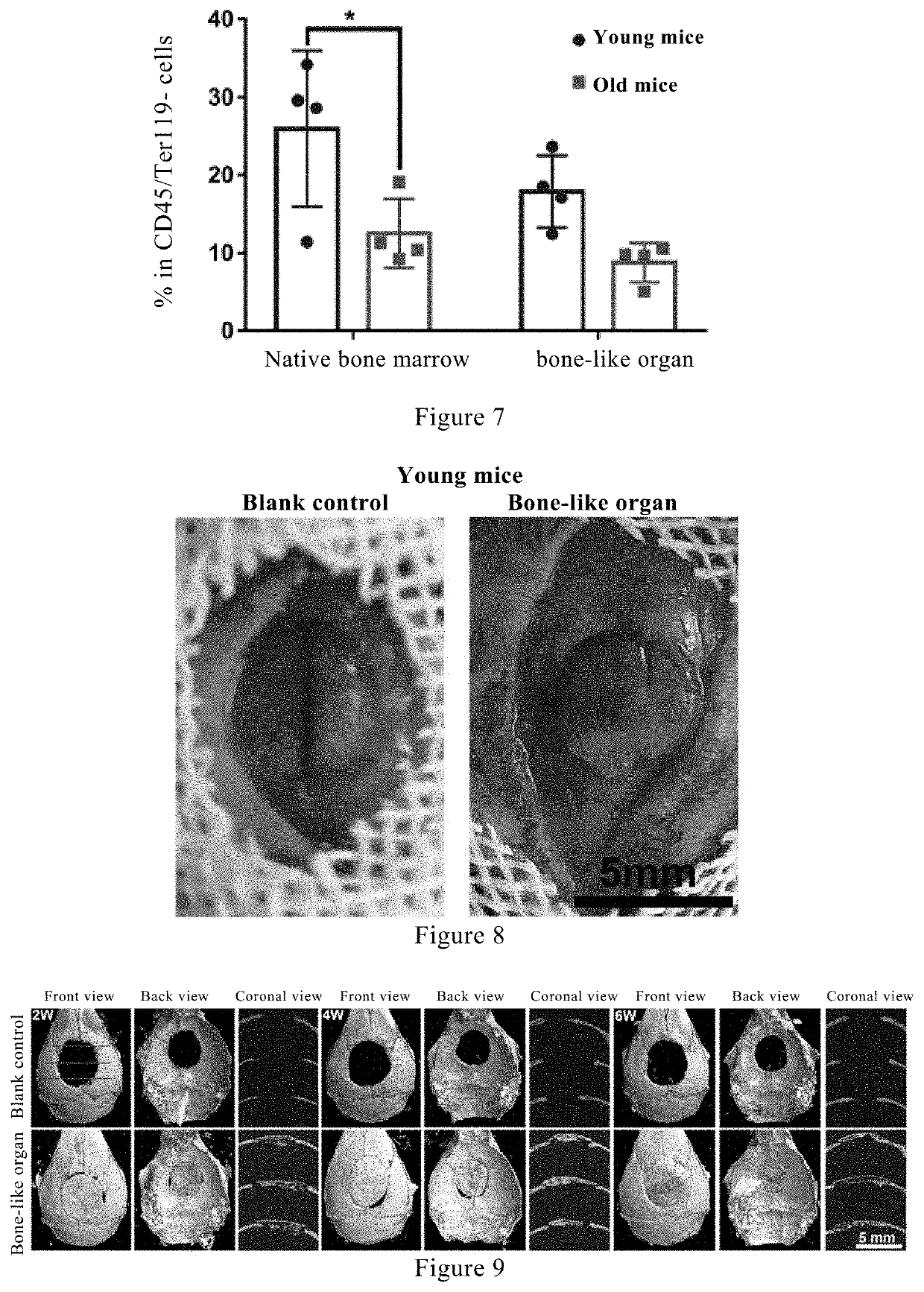New use of stem cell generator in preparation of bone defect repair materials
a stem cell and bone defect technology, applied in the field of materials, life and medicine, can solve the problems of damage to the bones, serious affecting the quality of life of individuals, and the insufficient activity of most of the artificial bone products used in the clinic, and achieve good therapeutic effects
- Summary
- Abstract
- Description
- Claims
- Application Information
AI Technical Summary
Benefits of technology
Problems solved by technology
Method used
Image
Examples
example 1 preparation
of Implant Material
[0098]30 μg of recombinant human bone morphogenetic protein-2 (rhBMP-2) synthesized by eukaryotic or prokaryotic expression system was added to a gelatin sponge (5 mm diameter=5 mm thick, 10 mg weight) and lyophilized to form an active material containing growth factor.
example 2
Bone-Like Organs Developed in Young Mice
[0099]The active materials described in Example 1 were implanted subcutaneously into the back of 8-week-old C57BL / 6 male mice to form stem cell generators. After 3 weeks of feeding, the bone-like organs developed by the stem cell generator were taken out. One part was used to take macro photos, make H&E sections and flow cytometry detection, and the other part was used for the transplantation treatment of autologous skull defect.
example 3
Bone-Like Organs Developed in Old Mice
[0100]The active materials described in Example 1 were implanted subcutaneously into the back of 52-week-old C57BL / 6 male mice to form stem cell generators. After 3 weeks of feeding, the bone-like organs developed by the stem cell generator were taken out. One part was used to take macro photos, make H&E sections and flow cytometry detection, and the other part was used for the transplantation treatment of autologous skull defect.
[0101]FIG. 1 showed the flow chart of the entire autologous skull defect transplantation treatment. The flow chart showed that the stem cell generators implanted in young / old mice developed into bone-like organs after 3 weeks, and one part were used for further characterization, the other part was used to treat autologous skull defects.
[0102]The macro photograph of FIG. 2 showed the stem cell generators formed in young / old mice in Example 2 and Example 3. The developed bone-like organs were dark red, indicating that the...
PUM
| Property | Measurement | Unit |
|---|---|---|
| diameter | aaaaa | aaaaa |
| outer diameter | aaaaa | aaaaa |
| area | aaaaa | aaaaa |
Abstract
Description
Claims
Application Information
 Login to View More
Login to View More - R&D
- Intellectual Property
- Life Sciences
- Materials
- Tech Scout
- Unparalleled Data Quality
- Higher Quality Content
- 60% Fewer Hallucinations
Browse by: Latest US Patents, China's latest patents, Technical Efficacy Thesaurus, Application Domain, Technology Topic, Popular Technical Reports.
© 2025 PatSnap. All rights reserved.Legal|Privacy policy|Modern Slavery Act Transparency Statement|Sitemap|About US| Contact US: help@patsnap.com



